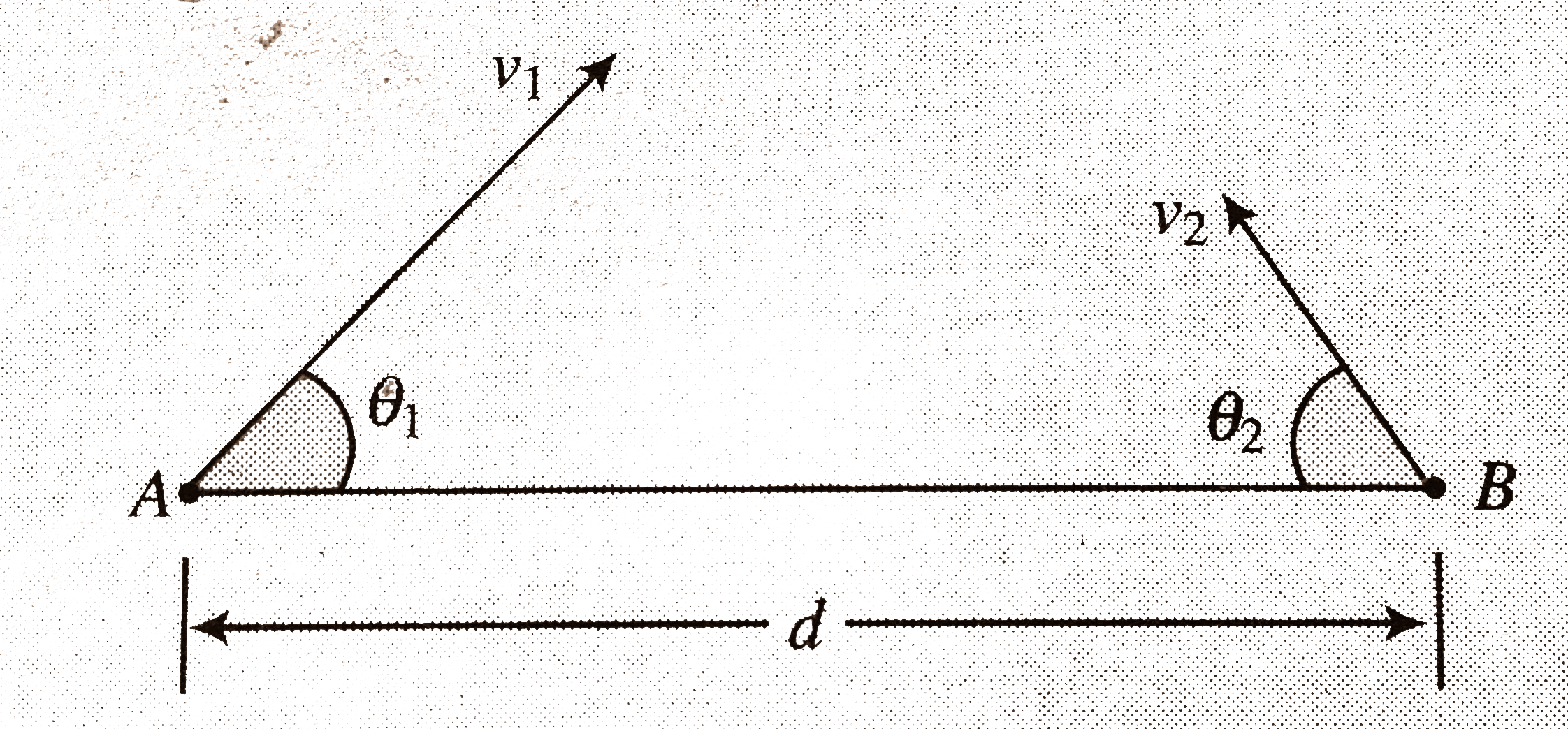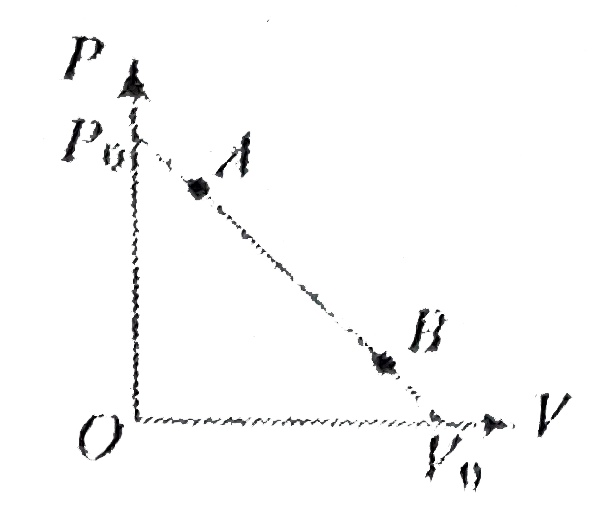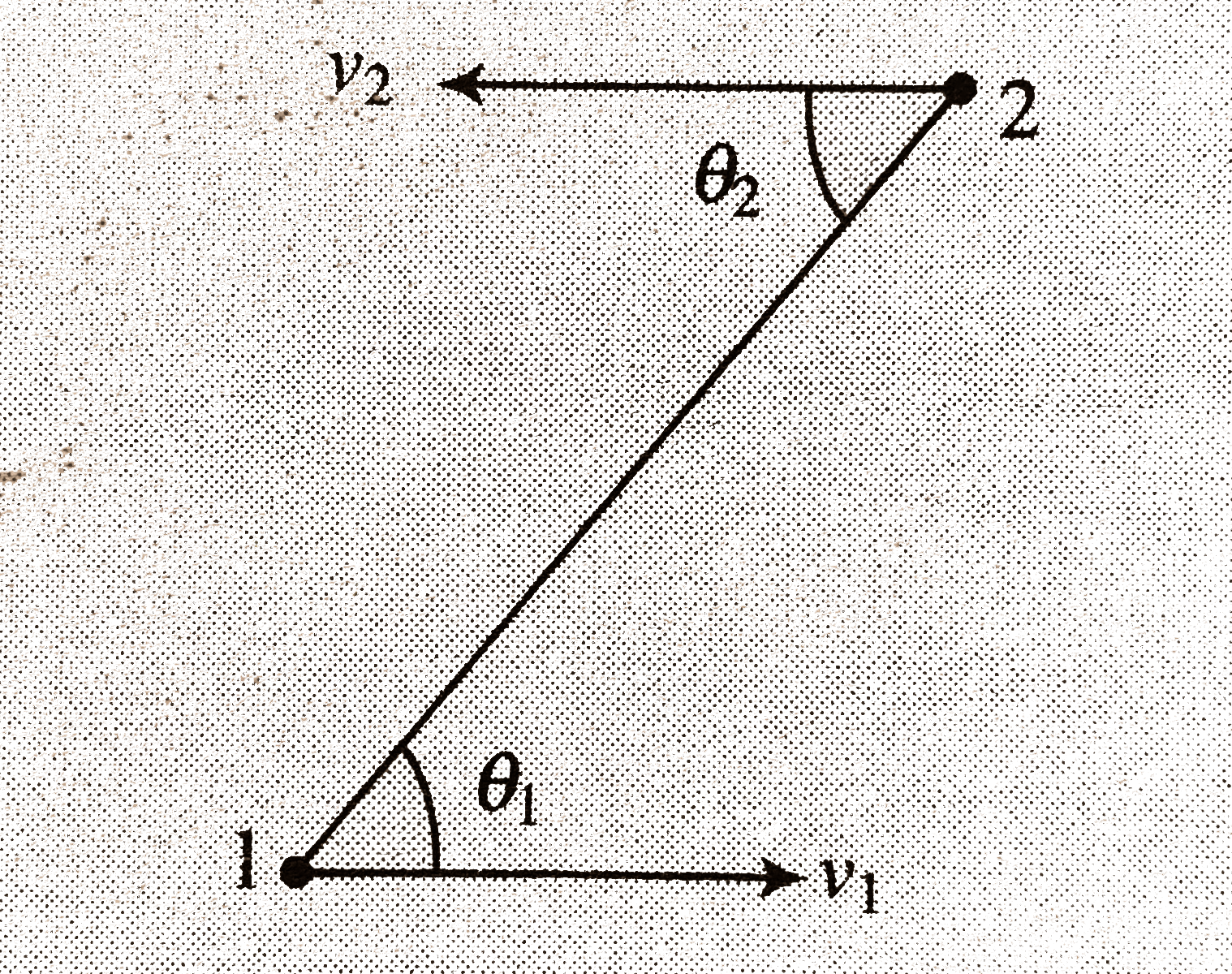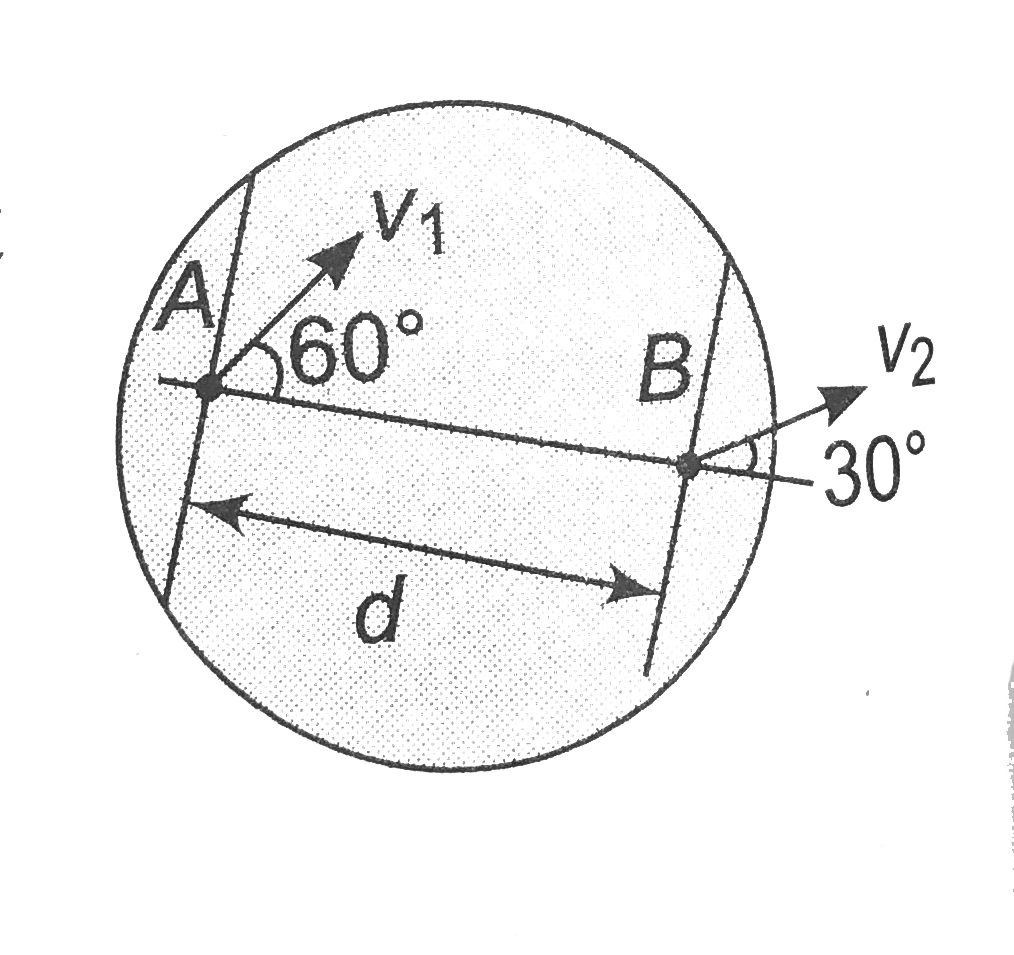Two particles AandB are moving with constant velocities v1andv2. At t=0, v1 makes an angle θ0 with the line joining AandBandv2 makes an angle θ2 with the line joining AandB.
(a) Find the condition for AandB to collide.
(b) Find the time after which AandB will collide if separation between them is d at t=0.
 .
.
Velocity of approach is the relative velocity along line AB
vAPP=v1cosθ1+v2cosθ2.
Topper's Solved these Questions
- KINEMATICS-2Book:CENGAGE PHYSICS ENGLISHChapter:KINEMATICS-2Exercise:Solved Examples
Explore 5 Videos
- KINEMATICS-2Book:CENGAGE PHYSICS ENGLISHChapter:KINEMATICS-2Exercise:Exercise 5.1
Explore 15 Videos
- KINEMATICS-1Book:CENGAGE PHYSICS ENGLISHChapter:KINEMATICS-1Exercise:Integer
Explore 9 Videos
- KINETIC THEORY OF GASESBook:CENGAGE PHYSICS ENGLISHChapter:KINETIC THEORY OF GASESExercise:Compression
Explore 2 Videos
Similar Questions
Two particle are projected with same initial velocities at an angle 30∘ and 60∘ with the horizontal .Then
View SolutionThe equation of projectile is y=16x−5x24. Find the horizontal range.
View SolutionA man in a lift ascending with an upward acceleration a throws a ball vertically upwards with a velocity v with respect to himself and catches it after t1 seconds. After wards when the lift is descending with the same acceleration a acting downwards the man again throws the ball vertically upwards with the same velocity with respect to him and catches it after t2 seconds?
View SolutionOne mole of an ideal monatomic gas undergoes a linear process from A to B , in which is pressure P and its volume V change as shown in figure .

The absolute temperature T versus volume V for the given process is
View SolutionA particle moves in a straight line with uniform acceleration. Its velocity at time t=0 is v_1 and at time t=t is v_2. The average velocity of the particle in this time interval is (v_1 + v_2)/2 . Is this statement true or false?
View SolutionTwo particles A and B are moving with constant velocities v_1 and v_2 . At t = 0 , v_1 makes an angle theta_0 with the line joining A and B and v_2 makes an angle theta_2 with the line joining A and B . Find their velocity of approach. .
View SolutionTwo particles A and B are moving with constant velocities v_1 and v_2 . At t = 0 , v_1 makes an angle theta_0 with the line joining A and B and v_2 makes an angle theta_2 with the line joining A and B . (a) Find the condition for A and B to collide. (b) Find the time after which A and B will collide if separation between them is d at t = 0 . .
View SolutionTwo particles 1and2 move with velocities →v1 and →v2 making the angles θ1andθ2 with the line joining them, respectively. Find angular velocity of relative→1.
 .
.
View SolutionTwo points A and B on a disc have velocities v1 and v2, respectively, at some moment. Their directions make angles 60∘ and 30∘ respectively, with the line of separation as shown in figure. The angular velocity of disc is :
 .
.
View SolutionA particle is moving in a verticle circle. If v_1 is the velocity of particle at highest point and v_2 is the velocity of particle at lowest point , then the relation between v_1 and v_2 is
View SolutionA and B participate in a race with acceleration a_1 and a_2 , respectively . A reaches t times earlier than B at finish line and their velocities at finish line are v_1 and v_2 , respectively. If difference between their velocities is v , then find the value of v
View SolutionA particle moves in a strainght line with uniform acceleration . Its velocity at time t=0 is v_1 and at time t_2=t is v_2. The average velocity of the particle in this time interval is (v_1+v_2)//2 Is this correct? Substantiate your answer.
View SolutionOf a body v_1 The velocity is projected from point A as pictured. At the same time, from point B to the second body v_2 The velocity is thrown vertically upwards. Point B and the highest point of the projectile align in the vertical direction. To collide both bodies v_1/v_2 Should be
View SolutionParticle A of mass m_1 moving with velocity (sqrt3hati+hatj)ms^(-1) collides with another particle B of mass m_2 which is at rest initially. Let vec(V_1) and vec(V_2) be the velocities of particles A and B after collision respectively. If m_1 = 2m_2 and after collision vec(V_1) - (hati + sqrt3hatj)ms^(-1) , the angle between vec (V_1) and vec (V_2) is :
View SolutionTwo particle A and B, move with constant velocities vec(v_1) and vec(v_2) . At the initial moment their position vectors are vec(r_1) and vec(r_2) respectively . The condition for particles A and B for their collision is
View SolutionA particle is moving in a verticle circle. If v1 is the velocity of particle at highest point and v2is the velocity of particle at lowest point , then the relation between v1 and v2 is
View Solution
